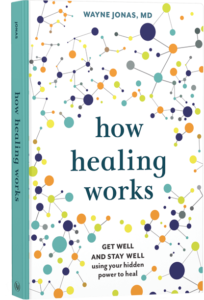Isolation is not our normal state. That fact became abundantly clear during COVID when we were relegated to socializing less frequently and using virtual means for visual communication. We found the effects of isolation can be all too damaging, but this is true even without a pandemic.
Loneliness and isolation are strong contributors to chronic diseases—both mental and physical—and work primarily through the body’s stress and fear responses, inducing inflammation in the walls of blood vessels and in the brain and impairing the immune response.
The magnitude of increased health risks for people who are socially and emotionally disconnected from others and the comparative protection for people who are well connected are comparable to well-established risk factors such as smoking, obesity, injury, substance abuse, and environmental quality.
Depression from Loneliness and Isolation
Depression (major depressive disorder or clinical depression) is classified as a mood disorder that tends to incorporate sadness, apathy, and low energy—symptoms that were becoming more and more common during COVID. It is currently the leading cause of disability throughout the world, with nearly 300 million people suffering from depression. And while general feelings from sadness or grief can overlap with depression, the American Psychological Association makes a clinical distinction between these feelings stating, “If a person’s feelings of sadness last for two weeks or longer, and if they interfere with daily life activities, something more serious than ‘feeling blue’ may be going on.”
This continued state of depressed emotions and its effect on mental health is a chief medical concern. The emotional pain that stems from depression can be quite impactful on our lives, ranging from missing work and important life events to an increased risk of suicide. That’s why I consider it so important when I see a patient with pain to assess them as a whole person – not just focusing on their pain, but addressing all the symptoms that burden mental health.

Integrative Health Approaches
It is estimated that, when combined, pharmaceutical and behavioral interventions are effective in treating 60%-70% of people with depression, and much of this effect is due to simply getting treatment (i.e., the placebo effect). Additionally, pharmaceutical interventions can sometimes produce adverse effects and cannot be taken by certain patients (such as pregnant women). Integrating the use of evidence-based complementary interventions provides additional options for patients seeking non-drug approaches or for whom conventional forms of treatment do not work or are not wanted.
1. Exercise
Exercise has been shown to improve cognition, mood, emotional regulation, and motor function. The act of exercising can be done virtually now or with minimal direction—promoting self-esteem and self-efficacy. The Mayo Clinic (and other organizations) support the use of exercise for symptom management among people with depression.
Evidence:
- A systematic review of randomized trials of exercise programs found that moderate, supervised aerobic activity three times a week for nine weeks improved depressive symptoms.
- A meta-analysis of randomized control trials with a total of 977 participants found that physical exercise is an effective modality for treating depression and is a useful adjunct to pharmaceutical interventions.
2. Yoga
Numerous studies attest to the benefits of yoga, a centuries-old mind-body practice, on a wide range of health-related conditions—particularly stress, mental health (including depression), and pain management. The internet is a wonderful resource for finding beginner’s yoga practices or you can even sign up for online classes.
Evidence:
- A randomized control study including 38 adults with mild to moderate depression found that an eight-week hatha yoga intervention clinically reduced depression symptoms.
- A systematic review of randomized control trials looking at yoga interventions for depression found that yoga improved depressive symptoms as much as taking an antidepressant drug.
- A twelve-week mindfulness-based yoga intervention for women with depression found that in comparison to those who participated in a walking group, those in the yoga group reported significantly lower levels of rumination (a frequent symptom of depression).
3. Mindfulness Meditation
According to our recent survey, the vast majority of U.S. adults (80%) say they would be more mindful about practicing self-care regularly once the pandemic was over. Meditation is such a practice that involves consciously exerting control over breathing and attending non-judgmentally to the present moment. It produces multiple physiological and chemical effects such as decreased heart rate, blood pressure, and cortisol (stress hormone) levels.
Evidence:
- A meta-analysis of mindfulness-based approaches found they significantly reduce depressive symptoms and concluded that they are a promising approach for treating people suffering from clinical depression.
- A meta-analysis and systematic review looking at mindfulness-based cognitive therapy for depression found that those who had had three or more episodes of depression saw a significant reduction in recurrence of episodes.
4. Herbs and Supplements
Herbs and supplements involve taking a plant or pill, usually orally, to either maintain or improve an individual’s health. The most commonly used herbs and supplements used to treat depression are:
- John’s wort
- Saffron
- Omega-3 fatty acid (fish oil)
- MSM (Methylsulfonylmethane)
- 5-HT (5-hydroxytryptophan)
- SAMe (S-adenosyl methionine)
Find out three ways to use supplements healing in our blog post, and be sure to consult your doctor when implementing new supplements into your health routine.
Talk To Your Doctor to Integrate All These Practices
Always let your medical providers know what treatments you are using to improve your health. Never change your medications without consulting your providers. If your doctor does not know about or offer some of the complementary and integrative practices described in this article, give him or her a copy of this pocket guide and ask if you can work with them to integrate some of these methods into your treatment plan. In this way, you are both building a more holistic healthcare process for healing chronic illness.

Your Health Into Your Own Hands
Drawing on 40 years of research and patient care, Dr. Wayne Jonas explains how 80 percent of healing occurs organically and how to activate the healing process.

